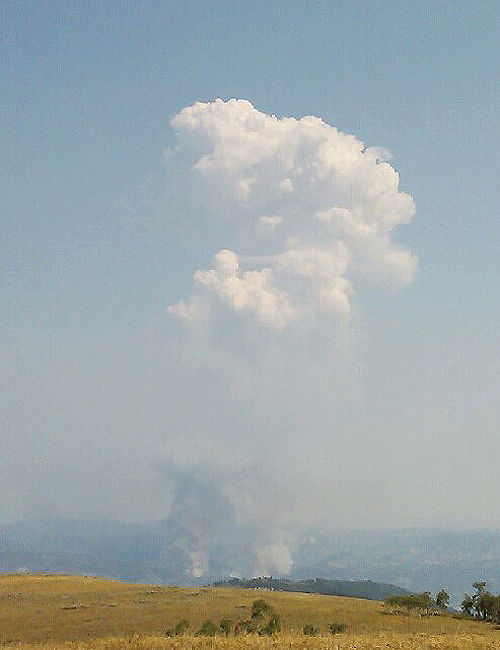{{tncms-inline alignment=”right” content=”<p>&nbsp;&ldquo;The smoke poses the biggest risk to people who have existing conditions that make breathing difficult, such as asthma and chronic obstructive pulmonary disease (COPD).&rdquo;</p>” id=”b2b4f970-d194-4ef4-b1c3-3d0be1fc0413″ style-type=”quote” title=”Pull Quote” type=”relcontent”}}
Smoke from wildfires burning in several western states has blanketed much of the region, and has also been carried all the way to the East Coast by the jet stream.
As the Tank Hollow wildfire north of Highway 6 in Spanish Fork Canyon continues to contribute to hazy conditions, it is clear that the smoke, ash and particulate matter from the fire aren’t just a nuisance but can also pose a health risk.
The fire was started by lightning Aug. 11 and has scorched more than 11,000 acres. About 189 fire personnel are working toward a projected full containment date of October 15. With prevailing weather patterns generally moving from west to east, smoke from the fire is occasionally enveloping portions of Carbon and Emery Counties.
Southeastern Utah Health District Environmental Health Director Brandon Bradford advised, “The smoke poses the biggest risk to people who have existing conditions that make breathing difficult, such as asthma and chronic obstructive pulmonary disease (COPD).” He said the smoke will aggravate the symptoms of those conditions.
Very old, very young face greatest risk
The very young and the very old are also more susceptible to problems associated with breathing the smoky air, which can include coughing, difficulty breathing, and shortness of breath.
He also noted that keeping track of the air quality through the use of the air quality index will help individuals with respiratory diseases plan or modify their activities and exertion levels accordingly. The information is available online at https://deq.utah.gov/.
Bradford, who was recently appointed as the interim local health officer, emphasized the importance of recognizing the symptoms, even for very active, healthy people. He advises anyone who believes they have been affected to contact their health care provider.
If you are advised to stay indoors, the Centers for Disease Control recommends keeping indoor air as clean as possible by keeping windows and doors closed. Run an air conditioner but keep the fresh-air intake closed and the filter clean to prevent outdoor smoke from getting inside. Avoid activities that increase indoor pollution, such as burning candles, vacuuming and smoking.
If you have a window-mount or portable swamp cooler, the website, JamesRussellPublishing.com recommends some steps you can take to filter out smoke, dust and pollen. Turn off the fan but leave the water pump running. Make sure you have closed foam evaporative pads installed, and put a pedestal fan about 12 inches from the cooler vent. By running the pedestal fan on low speed, the smoke-laden air will slowly be drawn past the closed foam pads, removing the smoke particles and odor which will be absorbed by the water.
The U.S. Department of Energy advises optional filters can be added to swamp coolers to remove most of the particulates from incoming air and reduce the tendency of some coolers to pull water droplets from the pads into the blades of the fan. Most evaporative coolers do not have air filters as original equipment, but they can be fitted to the cooler during or after installation.

